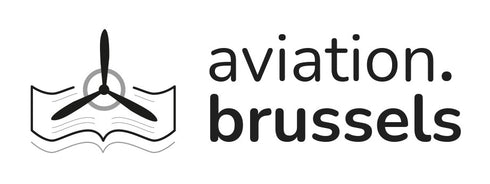LUFTWAFFE TEST PILOT – Flying captured Allied Aircraft of World War 2












Prix régulier 35,00 € TTC 6%
Characteristics
| Book cover finish | Hardcover ( rounded spine binding ) |
| Special features | Dust jacket |
| Condition | Used very good |
| Number of pages | 158 |
| Published date | 1977 |
| Language | English |
| Collection / Series | Motor buch Verlag |
| Size | 21x 29.7 cm |
| Author | HANS-WERNER LERCHE |
| Editor | Motorbuch-Verlag |
Description
On April 23, 1945, fifteen days before the end of the war in Europe, Dipl Ing Hans-Werner Lerche, a Hauptmann in the Luftwaffe and one of its most experienced surviving test pilots, flew the Dornier Do 335 from the Luftwaffe test centre at Rechlin to the factory at Oberpfaffenhofen near Munich. This flight in one of the fastest piston-engined aircraft of the war was the last operational mission of an extraordinary career.
Thirty years later the author was at the Deutsches Museum in Munich to see the Do 335, put on public display. The memories of those years were rekindled and the idea for this book was born.
The result is Luftwaffe Test Pilot, based on the author’s wartime logbooks, which chronicles some of the most remarkable aviation episodes of the war. The author flew all the major German warplanes from the six-engined Ju 390 to the Bf 109, as well as many of the minor and experimental types. He specialised, however, in flying allied aircraft which fell intact into German hands – the Lancaster, B-17, B-24, B-26 and Wellington bombers and the Spitfire, Mustang, Thunderbolt, Typhoon, Tempest, Yak-3 and Lavochkin La-5 fighters.
Lerche had no flight manuals for these aircraft and had to fly them by intuition. It was a task that demanded the utmost concentration, adapt – ability and an inborn flying ability. Throughout his career Hans-Werner Lerche did not crash or even seriously damage a single aircraft – a unique testimony.
Among his more hair-raising exploits was flying a captured Avro Lancaster over Berlin in August 1944 to test experimental night-fighter radars, RAF raid when the radio failed shortly before an incoming when even the large German crosses and yellow markings would have been of little use in identifying friend from foe.
This book gives a fascinating insight into the Luftwaffe’s war effort and the qualities, good, bad or indifferent, of the many types that Lerche flew. The appendix lists the total of 125 types flown by the author and the book is illustrated with rare and fascinating photographs.












